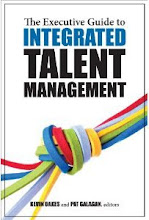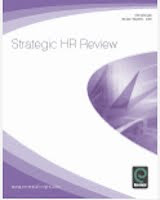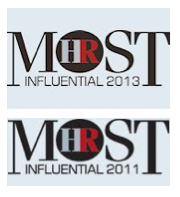 Keeping with my recent employee engagement theme, yesterday morning I attended Symposium’s Wellbeing & Stress Summit.
Keeping with my recent employee engagement theme, yesterday morning I attended Symposium’s Wellbeing & Stress Summit.
We started with a engaging presentation from Gill Crowther, HR Director at Nominet UK. Gill talked about using the Best Companies to Work For process to create love in their employees. She wants to see ‘Nominet’ stamped through any of her employee’s flesh if she were to cut off their arm.
So Nominet are focusing on creating tough love through great conversations between their people managers and employees. And by supporting their employees more broadly too. For example Gill talked about an HR manager who wants to become a coach and how Nominet are supporting her while she sets up her own coaching business, as they still get great value from her whilst she sets this up over the next few years,
They’re also measuring love creation through their engagement survey. And through other things eg I liked the example of some ex employees sending in thank you cards after some recent redundancies (not for their redundancy, but the way this was done).
Now I loved Gill’s attempt to create love – which I’ve posted on a few times, and will coming back to again soon. But I do think it will probably require a bit more, and a deeper, focus than Gill described.
I’m also not quite sure about the arm thing (about cutting it off!, or expecting to see your company name there when you do). I think we can (with difficulty) aim to create conditions where our people will love our organisations, but I just don’t think we can expect that old, traditional, formal, hierarchical, authority based love any more.
We also had a couple of good insights from BUPA, Simply Health and the CMI. I particularly enjoyed Alistair Dornan’s session reviewing some recent research from BUPA and elsewhere on health, wellbeing and engagement.
So there has actually been some good economic news as well, though it got a bit hidden between the Leveson Enquiry and the current wave of Bash the BBC-itis (ahem!), eg the ongoing fall un unemployment. There are a number of reasons for this – including more organisations ‘talent banking’ (keeping their surplus talent for further opportunities rather than jetisoning them for short-term cost savings) which I think is great news about how businesses are becoming more serious about HR – if it is true.
But Alistair suggests that organisations aren’t well prepared for the future. That’s firstly because of the rapid change in work and jobs. Eg that the top ten jobs in 2010 eg social media ones didn’t exist in at the turn of the century. And eg the average graduate today will have had 14 jobs by the time they’re 35.
Secondly, it’s down to the difficulties – unemployment and poor management – experienced over the last few years. The young and the over 50s have been hit disproportionately by the recession. And the 50 year old employee with just a couple of different roles under their belt and who has been unemployed for a few years now isn’t going to engage in the same old way, or respond that easily to the 35 year old manager already onto their 15th job.
I’d agree - you’re never going to find your company name stamped through the flesh of these (or even just most) people, it just isn’t going to happen. We need to find a different way to engage – and perhaps the basis for a different type of love?
Symposium Training is the training and workshops brand of Black and White Trading Ltd, one of the UK’s leading independent training providers for HR and related professions. With over 90 events a year, our conferences and seminars target delegates with interests in:
- HR Strategy & Practice
- Recruitment
- Health & Safety, Employee Well-being
- Pay & Benefits
- Employment Law
- Training & Development
- Diversity & Equality
- Employee Relations.
Symposium conferences typically feature 8-12 expert speakers per day, including professionals with first hand experience, academics, industry observers and other experts. Events generally provide strategic analysis of an issue and explore practical solutions for the workplace.
Also see HRreview - a news and information resource for human resources and related professionals. Updated news items are posted daily and there are regular updates to the features and analysis section, looking in depth at topical HR issues. HRreview’s website is supported by a weekly email newsletter (please register to subscribe).
 I seem to be have been having lots of conversations about diversity recently so was interested to see a new report from the CIPD and Bernard Hodes, 'Diversity and Inclusion - Fringe or Fundamental?' suggesting that 57% of employers say diversity and inclusion will become more important over the next five years.
I seem to be have been having lots of conversations about diversity recently so was interested to see a new report from the CIPD and Bernard Hodes, 'Diversity and Inclusion - Fringe or Fundamental?' suggesting that 57% of employers say diversity and inclusion will become more important over the next five years.
















 It's great to see Strategic HCM included in
It's great to see Strategic HCM included in  I was back at the Personnel Today awards last night.
I was back at the Personnel Today awards last night.
 We're kicking off with Archie Norman talking about work in the production era from his time at McKinseys - firms paid people, measured them. Everything was easy. But you can't pay spot rates like that now.
We're kicking off with Archie Norman talking about work in the production era from his time at McKinseys - firms paid people, measured them. Everything was easy. But you can't pay spot rates like that now. There are some nice links in the programme at the Miiddle East HR Summit. So after
There are some nice links in the programme at the Miiddle East HR Summit. So after  I'm spending an interesting day with Dave Ulrich (and about 500 HR leaders in the Middle East) at
I'm spending an interesting day with Dave Ulrich (and about 500 HR leaders in the Middle East) at  Keeping with my recent employee engagement theme, yesterday morning I attended
Keeping with my recent employee engagement theme, yesterday morning I attended  So perhaps just one more rant provoked by (not really about) the new report
So perhaps just one more rant provoked by (not really about) the new report 

 Today is the launch of the Engage for Success task force in the UK, with a group of CEOs meeting in London, and plenty of commentary in the press.
Today is the launch of the Engage for Success task force in the UK, with a group of CEOs meeting in London, and plenty of commentary in the press. You see it all the time these days - that proud assertion from leading HR professionals that they're business people who just happen to work in HR. Or linked to this, the need for HR professionals to develop business savvy and work in the business and speak the language of business, etc, etc - e.g.
You see it all the time these days - that proud assertion from leading HR professionals that they're business people who just happen to work in HR. Or linked to this, the need for HR professionals to develop business savvy and work in the business and speak the language of business, etc, etc - e.g. 








